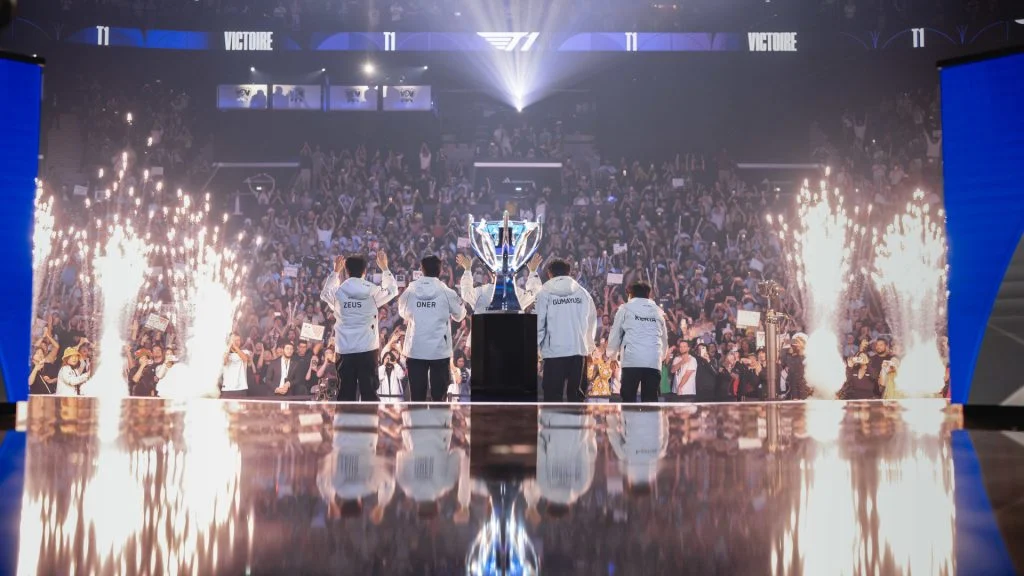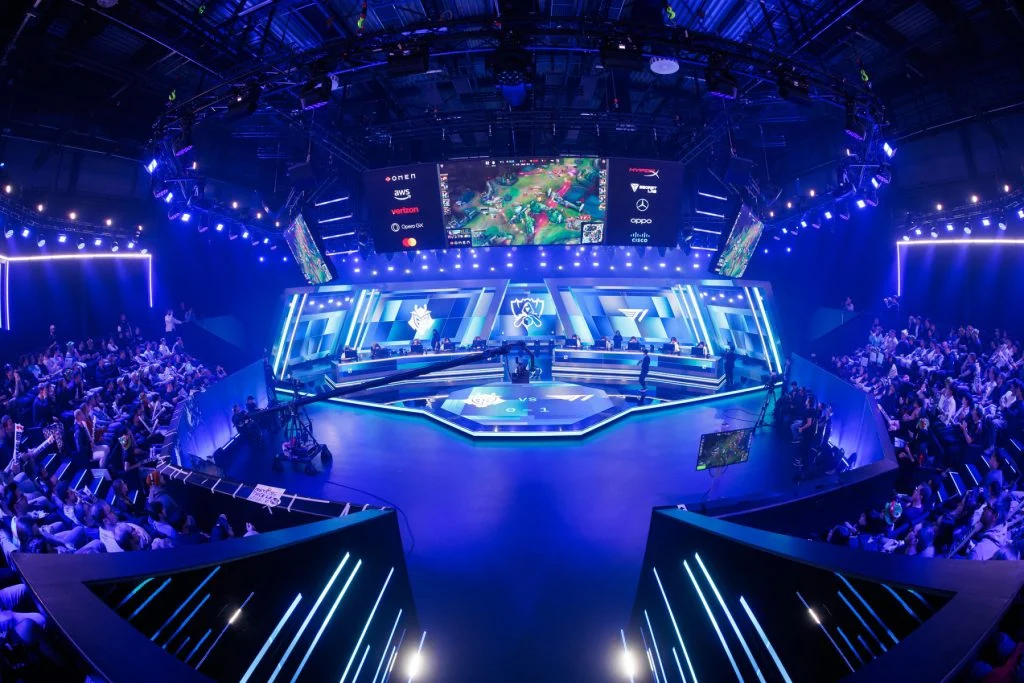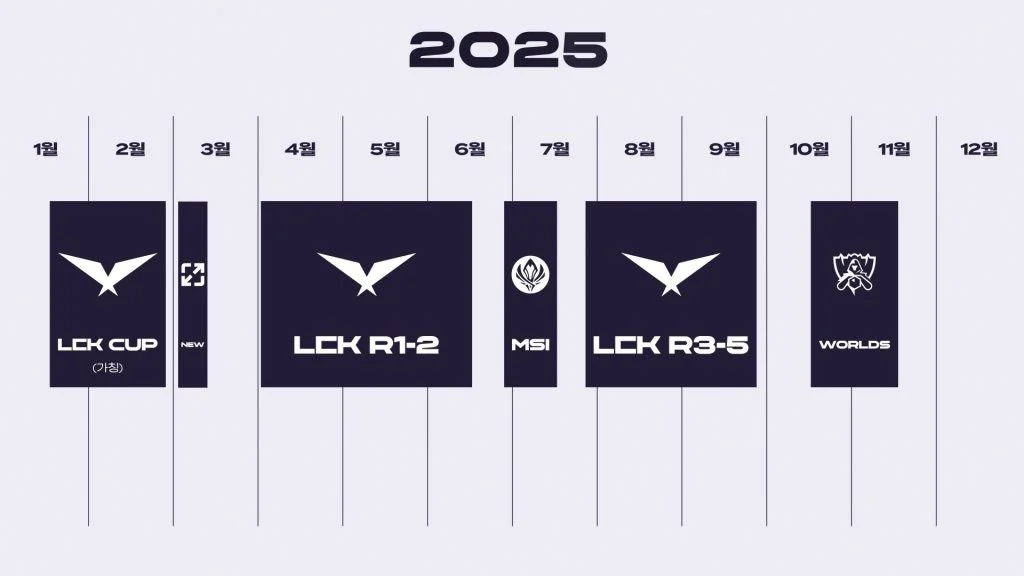
Interview: Riot Games’ Chris Greeley on Worlds 2024 and the future of League of Legends esports
- 글쓴이 : 경기도e스포츠협회
- 날짜 : 2024.11.06 15:59
- 조회 수 : 0
본문 : ESI - Tom Daniels

Image credit: Riot Games
Tomorrow (November 2nd) League of Legends, one of esports’ most popular games, will head to the O2 Arena in London to crown its 2024 World Champion.
Hosted this year in Europe, the League of Legends World Championship has been going on since late September, having been hosted in Berlin, Paris and, for the finals, London.
Capitalising on the esport’s increased interest during this period, League of Legends developer Riot Games has taken the opportunity over the past week to announce significant changes to its esports ecosystem for 2025. This includes all its leagues adopting a three-split format to accommodate for its new international event and unveiling major details surrounding its two new leagues – the LTA (the new Americas league) and the LCP (its new Pacific competition).
Earlier this week, Esports Insider sat down with Riot Games’ Global Head of League of Legends Esports, Chris Greeley, to discuss the League of Legends World Championship, the upcoming changes to the game’s ecosystem and lessons the publisher has learned.
Keep Reading
- League of Legends World Championship predicted to provide £12m to London economy
- League of Legends Asia-Pacific league unveils name and format
- League of Legends reveals teams and format for new Americas league, the LTA
2024 Worlds and its Venue Selection
The 2024 League of Legends World Championship, despite still being in progress, is currently the fifth highest viewed esports event ever recorded by Esports Charts (4.98m), a list that is topped by the Worlds 2023 (6.4m). Reflecting on the event as a whole prior to the finals, Greeley was very positive about this year’s edition.
“Overall, it’s been awesome,” he said. “It’s really difficult when we take Worlds to a region. There are so many fans and you want to be in a place where as many fans as possible can visit.
“But you know, we can’t do a 14-city Worlds Tour, so the fact that we were able to get to three different markets and bring international competition, I thought was great. I thought it was a good spread across Europe.”

The 2024 League of Legends World Championship in Paris. Image credit: Colin Young-Wolff/Riot Games
Whilst the general sentiment from the community has been that of excitement throughout the entirety of the event, Riot Games’ decision to host the competition’s Play-Ins and Swiss Stage in the Riot Games Arena in Berlin caused backlash from parts of the community. This is largely because of the venue’s 210 seating capacity.
When asked whether he expected a negative reaction around the Play-Ins and Swiss venue, Greeley noted: “We kind of understood what the fan reaction was going to be. Generally, we would do like we did in Korea – Play-In’s in the studio and then move Swiss Stage out.”
“The show at the O2 this year is going to be big. I think we wanted to kind of try out some different things to figure out what works for us.”
Greeley admitted they’d chosen to use the Berlin studio for the Swiss stage “pretty fast,” though he mentioned that for next year’s Worlds in China the Swiss Stage is expected to be a little bit bigger, “just based on what’s available to us in terms of venue.”
He went on to state: “We’re trying to find a nice balance between how do we make the biggest parts of Worlds – quarter-finals, semi-finals – feel as big as we can, while at the same time not making Swiss feel too small or inconsequential. Because, in a lot of ways, it is one of the most exciting parts of the competition.”

League of Legends World Championship 2024 Swiss Stage in Berlin. Image credit: Liu Yicun/Riot Games
When discussing the Quarter-finals and Semi-finals at the Adidas Arena in France, Riot Games’ Global Head of League of Legends described the atmosphere as “very loud, very energetic” whilst highlighting the LEC’s European Regional League (ERL) ecosystem as a factor in the atmosphere.
“The LFL, the ERL in France, is amazing. Viewership is huge and fans are fiercely devoted to those teams, to those players. Ultimately, I think a lot of the success we’ve seen from the LEC over the last couple of years has been due in large part to the fact that the ERL system is really strong. Fans in the region follow their team. Not only fans in France, but also fans in Spain and throughout Europe.
“Then when those players get promoted to the LEC, it’s such a good feeling for people to see that the player they’ve been following domestically is now playing at the LEC level. I think it’s something that we absolutely want to continue to foster.”
Heading into the finals in London, Greeley teased a big show at the O2 Arena — and a few hours later it was confirmed that Linkin Park would be performing the Worlds 2024 anthem at its opening ceremony alongside other performances. “The O2 is an incredible venue. From everything I’ve seen, I think the show is going to be awesome.”
Taking place November 2nd, the League of Legends World Finals will see China’s BLG take on the reigning world champions, Korea’s T1.
League of Legends 2025: the year of format changes

Image credit: Riot Games
Looking ahead past the 2024 World Finals, Esports Insider also had the opportunity to ask about League of Legends’ brand new 2025 esports ecosystem. The LCK, LEC, LTA (previously the LLA, CBLOL and LCS), and LCP (the Pacific league), have all unveiled their formats for the upcoming season — each unique to their regions.
The biggest shift in League of Legends’ esports structure is the introduction of a partner-team ecosystem, with the new LTA and LPA featuring promotion and relegation for the first time since Riot Games moved to a franchise model. These new leagues in particular will operate similarly to Riot Games’ other esport, VALORANT, in that there will be a mix of permanent partner teams with guest teams fighting to survive each season.
When asked about the possibility that promotion/relegation could be expanded into other regions, Greeley said: “The LEC and LCK still have 10 partner teams that own their spots and the LPL has their 17 teams as well. We haven’t bought any of those spots back. We haven’t expanded leagues.
“We’ll see how the promotion/relegation goes in the Americas and the LCP. I don’t know that it’ll ever roll out to other regions, but I think it’ll be a nice change in the ecosystem.”
Rearranging esports structures, no matter how significant, is never easy. So, to change all its major leagues to accommodate a new international event, each with different formats, is a monumental task. But, it’s also a sign of change.
Greeley has been involved in the League of Legends ecosystem since 2017. Starting off in the North American ecosystem via roles such as LCS Commissioner and Head of Esports for NA and Oceania, he went on to become involved in the global esports team in 2022. In 2024, following the departure of Naz Aletaha, Greeley took the helm during its major transition plans.
Greeley noted that discussions surrounding the future of League of Legends esports commenced in around February 2023 (the same year that the LEC launched its three-split format). According to Riot Games’ Head of League of Legend Esports, plans were fueled by ambitions to make its teams in the long-term more sustainable whilst also being able to “pay good salaries to our pro players” and to allow teams to “continue to create content that’s exciting for fans.”

An example of the LEC’s three split season in 2025. Image credit: LEC
Despite the fact that discussions started in 2023, there were no plans to push out its new structure in 2024. “[In 2024] we had also just moved into our new international format,” said Greeley. “You want to make changes, but you don’t want to be too jarring. So it did give us a lot of time to work.
“2024 was a year of building as we figured out where all the pieces went, and then 2025 is the year of executing and really showing fans all the things that we’ve been working on.”
With each league operating under three splits, of varying sizes, as well as the new Riot Games ecosystem having three international events a year, the topic of scheduling and burnout came up in conversation. Is there too much happening in the League of Legends calendar? Will it affect teams that compete across all three internationals?
“The calendar is crowded. Like, I can call it what it is, right?” Greeley admitted. “We start in mid-January, we end in mid-November and there’s not a lot of breaks in between.
“But there’s not a lot of breaks this year either,” he added. “We essentially replaced some regional competition with an additional international format.
“There are going to be a handful of teams around the world who play all year…. There’s also going to be some teams who don’t qualify for any playoffs and have a much shorter schedule.”

A brief look at the 2025 LCK season. Image credit: Riot Games
Ultimately, what Riot Games worked on when creating the new calendar was to find the right balance. “We’ve talked about it for years because we don’t want to burn out our best teams and players in the world, nor do we want teams and players who didn’t qualify for playoffs to spend three-quarters of the year sitting around.”
As League of Legends esports enters into a new year and a new era, it’s sometimes easy to forget the longevity of the game and how it continues to readapt, sometimes for better and sometimes for worse.
Still, it has been 13 years since the first League of Legends World Championship, won by UK-based esports organisation Fnatic. So, in a sense, Worlds is coming home when the finals start in London. On November 2nd, a new victor will be crowned. Then the competitive calendar will reset and an entirely new road to Worlds 2025 in China will begin.


